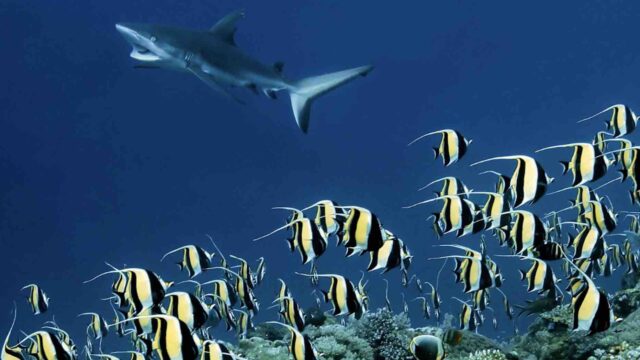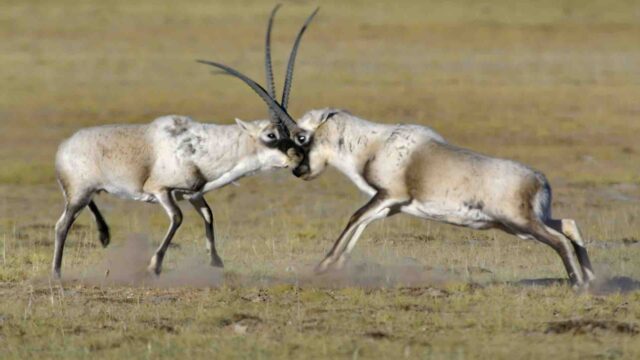Seven-part wildlife landmark Asia, now on BBC One and iPlayer, is made by BBC Studios Natural History Unit, co-produced with BBC America, France Télévisions and ZDF. It was commissioned by Jack Bootle, Head of Commissioning, Specialist Factual, with commissioning editor Sreya Biswas, Head of Commissioning, Natural History.
The following behind-the-scenes account is taken from BBC interviews.
The Natural History Unit made the series Seven Worlds, One Planet with the BBC five years ago and this series was born from the episode on Asia. The series took four years to film after getting the greenlight.
“For whatever reason, our cameras have not heavily focused on those animals in Asia before,” says Roger Webb, executive producer. “Technology has moved on so fast in the last five or ten years. To be able to apply that to filming stories that have rarely been told or not told at all is just super exciting for us.”
“It feels that Asia is a continent that’s looming large internationally,” says series producer Matthew Wright. “It now contains more people than the rest of the planet put together. Having such a huge size and a huge reach north, south, east, west, it’s got an unparalleled array of animals.”
With Asia extending to the Arctic Circle, very close to Australia and to the edge of Africa, it has great diversity.
“Obviously, Asia’s got these big familiar box office animals, tigers and elephants and polar bears, and so on,” says Wright. “But there’s also a cast of unsung heroes, and we’ve tried to focus on creatures that we may not have seen before. We are also showing well-known creatures doing things that we’re not familiar with like tigers in a city or elephants looking for food on a bus. It’s fresh to the audience and shining a light on a part of the planet that’s been underserved.
The series is narrated by Sir David Attenborough. “He’s painstakingly gone through every script and fed back to us,” says Webb. “He interrogates every word and will review things in great detail. It’s been a great dialogue. Together we’ve been truly able to hone the scripts.”
Asked to cite favourite scenes, Webb starts with the opening sequence in the whole series.”A school of Moorish idols are chased by grey reef sharks…. That has been on quite a few wildlife filmmakers’ bucket lists, but producer Mark [Wheeler] really went for it. He will probably say he got lucky, but he planned everything down to the nth degree, and he worked with a brilliant team. They managed to capture something that’s never been captured before…. The energy and the music and, of course, Sir David’s narration combine with that to create a very powerful and engaging sequence.”

The cave swifts in Thailand which feature in the Mountains episode is another scene that Webb picks out. “It’s the greatest concentration of swifts anywhere on the planet. But as they’re nesting in this cave, there’s a little twist to the story. In the water that sits at the bottom of the cave are these big catfish. They are not just minding their own business. They’re looking for a chance to feed. As the swifts duel for a nesting site, they do on occasion fall into the water, and that’s a dangerous place for them to be with these big fish lurking there. Of course, the fish are ready. They’re waiting for these opportunities.” It’s a great sequence, really well filmed by the team led by the producer Sara [Douglas].
For The Frozen North episode, the team filmed the chiru, an antelope found on the Tibetan plateau, during the rutting season. “They live in this incredible, barren place over 4,000 meters. It’s a very tough place to live. We embarked on a mission to document the rutting of the chiru, and our cameraman Jacky Poon wasn’t having the best of luck. Then one day he came across this lone wolf. In itself, it was amazing to see this wolf, but then Jacky realized it was quite happy for him to follow it around. So Jacky stuck with this lone wolf, and lo and behold, it started hunting the chiru.

“Jacky managed to film the most incredible hunt sequence with this wolf running and running and running, hour after hour, wearing the chiru down. The chiru are actually faster than the wolf, but the wolf has more stamina, and eventually this lone wolf manages to pick off one of the chiru. It’s almost like a test of the fitness of the chiru, and sure enough, as one tires, the wolf is able to take it down. Jacky shot that using drones. The light was fading. The battery was fading. It had all the classic cliches of filmmaking.
“Everything was reaching that moment where the team was thinking, “Are we going to get this or not?” But they did get it, and it is a very special and powerful sequence.”
The production also shot a group of tigers that have set up home on the outskirts of Bhopal, an industrial city in India. “The crew had to spend months and months there to get six or seven minutes of footage,” says Wright. “We knew the mother tiger was there, and then she became pregnant near the beginning of filming. So then we were really hopeful she would have cubs, which she did. That’s a real triumph for the producer that she managed to film that. But we never would have achieved that without the Indian crew. They have been documenting those tigers for a number of years. So they knew exactly where the best places were to put the cameras.
“That is something that has been true throughout this series. We’ve used an enormous number of local crews across the board. That’s something that’s changed. Since Covid, our units have had to rely more and more on local crew because we can’t always get to locations. As a result, excellent local talent has increased across the planet. We couldn’t have made this series without local crews. It’s really important to make that point.
Asia in Numbers
Total number of filming days: 2,287
Total number of shoots: 120 shoots
Total number of countries filmed in: 21 countries
another sequence shows elephants taking food from people on buses in Sri Lanka. “Normally, the problem with animals is scaring them off and having to hide and wait for them to turn up,” says Wright. But in this case, it was the opposite. The elephants were there all the time! In the making-of section at the end, we show just how difficult it was to film the elephants there because we really couldn’t control those public buses at all. So the crew just had to ride up and down on the buses.
One of Wright’s favourite scenes is in The Frozen North episode. “It features these little birds feeding on sap icicles. It’s got an edge to it because those birds might not live if they didn’t get to the sap icicles. Although it’s hard to capture on film, it is an incredible environment. They are filmed in super slow motion, and you can just appreciate their anatomy as they manoeuvre around the icicle to lick it.”
He also talks about filming in Lake Baikal, which is a frozen wilderness. “You get this particular Baikal seal there which you don’t find anywhere else on the planet. It’s very tough for the mothers raising their pups. They have to nurse them in these ice dens. Gradually, as the weather warms up, the ice dens collapse, and the pups are pushed into the water beneath. We filmed this incredible piece of behaviour that again we don’t think has been documented before and is actually new to science.
“The mother seal has to take its pup beneath the ice, but there’s no oxygen to be found for a good distance. The pup can’t hold its breath for as long as the mother. So the mother appears to do this astonishing thing where she exhales the air that she’s holding in her lungs, creating small pockets of air beneath the ice. The pup is then able to go up to where this air pocket sits and breathe in the exhaled air from its mother, which is quite the most remarkable survival strategy. It allows the pup to cover the same distance under the ice as its mother because obviously it hasn’t got the same lung capacity.

“To witness and to document that is quite incredible. And it’s all the more powerful when you think you’re seeing things that people haven’t seen before and are new to science. More and more when we step into these places with the technology we now have, we can not only tell powerful stories, but we can also add to our understanding of these animals. And obviously, the more we understand them, the more we can help conserve them.”
Pippa Considine
Share this story

















